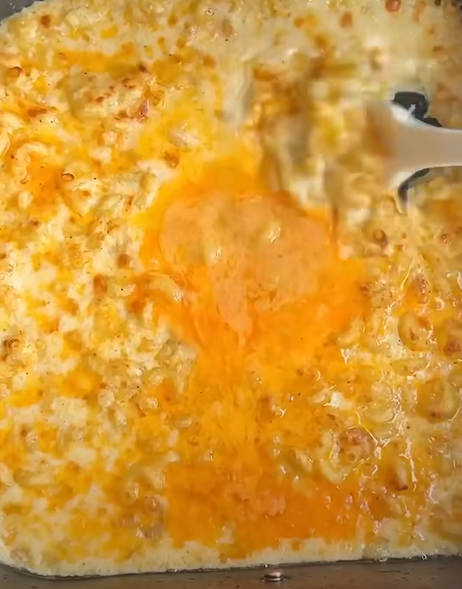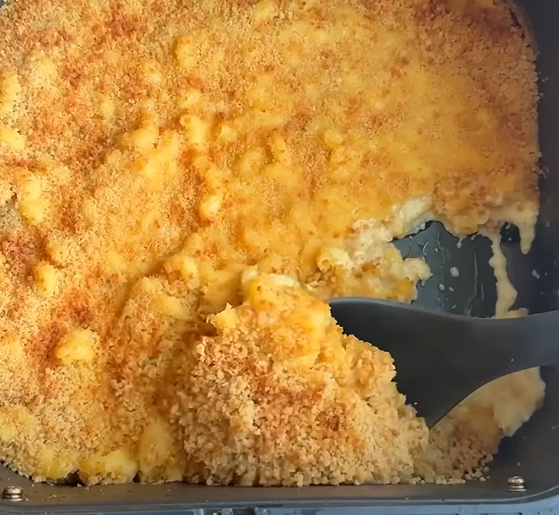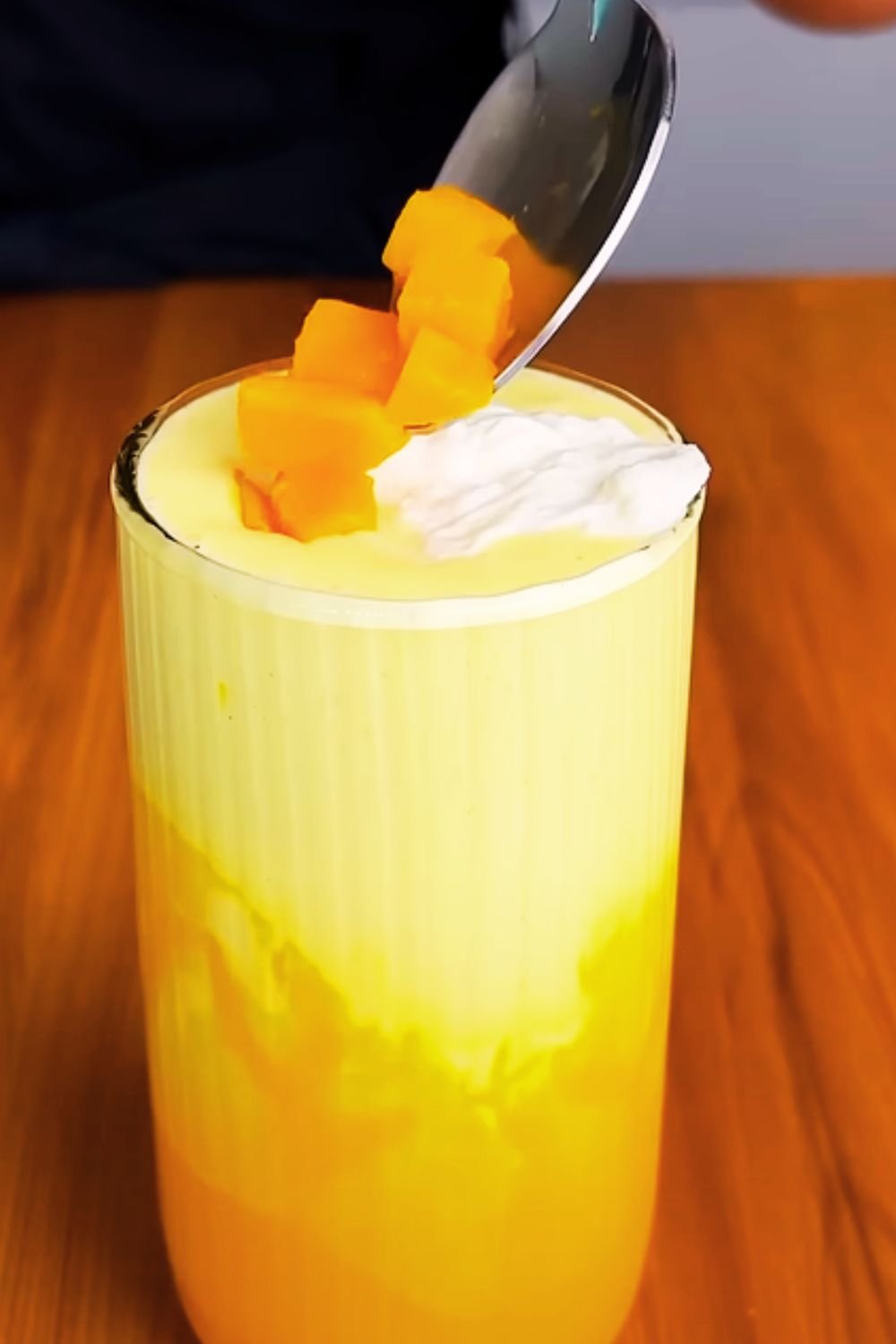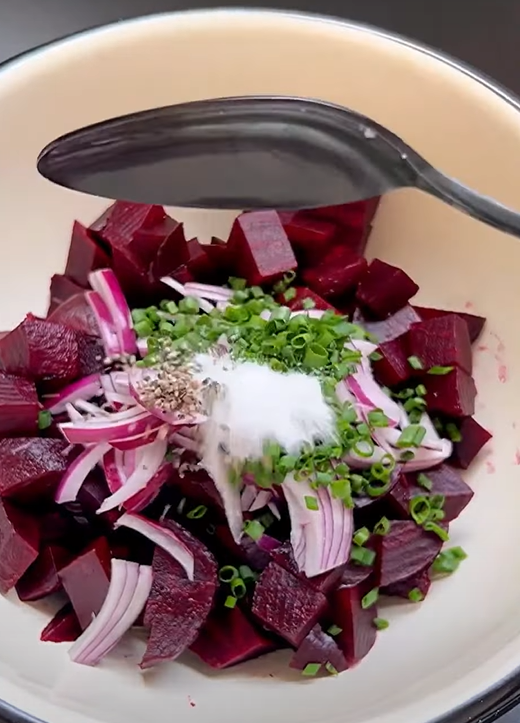When I first discovered the magic of stuffed cookies, my world changed forever. There’s something absolutely mesmerizing about biting into what appears to be an ordinary cookie, only to discover a surprise filling hidden within. Today, I’m sharing my absolute favorite creation: Big Blue Monster Stuffed Cookies that pay homage to everyone’s beloved Cookie Monster while delivering an explosion of flavor that’ll make your taste buds dance with joy.
These aren’t your average cookies. I’ve spent countless hours perfecting this recipe, experimenting with different techniques and flavor combinations until I achieved cookie perfection. The result is a soft, chewy blue cookie exterior that conceals a rich, creamy filling reminiscent of cookie dough itself. Each bite delivers multiple textures and flavors that create an unforgettable eating experience.
Understanding the Magic Behind Stuffed Cookies
Cookie Dough Consistency : The perfect balance between wet and dry ingredients that allows the dough to hold its shape while remaining pliable enough for stuffing
Filling Stability : A mixture that maintains its form during baking without melting completely or becoming too firm
Temperature Control : Managing dough and filling temperatures to prevent premature melting or hardening during assembly
Baking Chemistry : Understanding how different ingredients react under heat to achieve the desired texture contrast
The secret to creating these show-stopping cookies lies in understanding the science behind cookie construction. Unlike traditional cookies where ingredients simply combine and bake, stuffed cookies require precise timing, temperature management, and technique. I’ve learned that the dough needs to be sturdy enough to contain the filling without tearing, yet tender enough to create that perfect chewy texture we all crave.
Essential Ingredients and Their Roles
Creating the perfect Big Blue Monster Stuffed Cookies requires specific ingredients that work together harmoniously. I’ve discovered that each component plays a crucial role in achieving the final result, and substitutions can dramatically alter the outcome.
| Ingredient Category | Primary Ingredient | Quantity | Function | Pro Tips |
|---|---|---|---|---|
| Base Structure | All-purpose flour | 2¾ cups | Provides structure and chewiness | Don’t overmix to avoid tough cookies |
| Fat Component | Unsalted butter | 1 cup (softened) | Creates tenderness and flavor | Room temperature is crucial for proper creaming |
| Sweeteners | Granulated sugar | ¾ cup | Adds sweetness and helps with browning | Controls spread during baking |
| Sweeteners | Brown sugar (packed) | ¾ cup | Provides moisture and chewiness | Dark brown sugar intensifies flavor |
| Binding Agents | Large eggs | 2 whole | Binds ingredients and adds richness | Room temperature eggs mix better |
| Flavor Enhancers | Vanilla extract | 2 teaspoons | Enhances overall flavor profile | Pure vanilla extract preferred |
| Leavening | Baking soda | 1 teaspoon | Creates lift and texture | Fresh baking soda ensures proper rise |
| Flavor Balance | Salt | 1 teaspoon | Balances sweetness and enhances flavors | Fine sea salt works best |
| Color Magic | Blue food coloring | 6-8 drops | Creates that signature monster blue | Gel coloring provides vibrant results |
The filling requires its own set of carefully selected ingredients that complement the cookie base while providing that surprise element that makes these cookies truly special.
| Filling Component | Ingredient | Quantity | Purpose | Storage Notes |
|---|---|---|---|---|
| Cream Base | Cream cheese | 8 oz (softened) | Provides creamy texture | Must be room temperature |
| Sweetener | Powdered sugar | 1½ cups | Sweetens and thickens | Sift to prevent lumps |
| Flavor Base | Vanilla extract | 1 teaspoon | Enhances flavor profile | Use pure extract |
| Texture Element | Mini chocolate chips | ½ cup | Adds crunch and chocolate flavor | Mini size prevents tearing |
| Binding Agent | Heavy cream | 2 tablespoons | Adjusts consistency | Add gradually as needed |
Mastering the Cookie Dough Technique
Creating the perfect cookie dough for stuffing requires a specific approach that differs from traditional cookie recipes. I’ve refined my technique over years of baking, and these steps ensure consistent results every time.
The creaming process forms the foundation of exceptional cookies. I begin by ensuring my butter reaches the perfect room temperature consistency—soft enough to indent with light pressure but not melted or greasy. This usually takes about an hour on my kitchen counter, though I sometimes expedite the process by cutting the butter into smaller pieces.
Combining the butter with both granulated and brown sugars requires patience and attention. I cream these ingredients for a full three to four minutes using my stand mixer on medium speed. The mixture transforms from separate components into a light, fluffy mass that’s increased in volume and appears almost white. This process incorporates air, which contributes to the final cookie texture.
Adding eggs one at a time prevents the mixture from breaking or becoming too dense. I ensure each egg is fully incorporated before adding the next, followed by the vanilla extract. The blue food coloring gets added at this stage, and I’ve learned that gel coloring produces more vibrant results with less liquid addition.
The flour mixture requires gentle handling to prevent tough cookies. I whisk together the flour, baking soda, and salt in a separate bowl before gradually adding it to the wet ingredients. My mixer stays on low speed, and I stop mixing the moment the flour disappears. Overmixing develops gluten, resulting in dense, chewy cookies rather than the tender texture we’re seeking.
Crafting the Perfect Filling
The filling represents the heart of these cookies, and achieving the right consistency requires precision and patience. I’ve experimented with numerous combinations before settling on this cream cheese-based mixture that provides richness without overwhelming the cookie flavors.
Room temperature cream cheese is absolutely critical for smooth mixing. Cold cream cheese creates lumps that resist incorporation, while overly warm cream cheese becomes too soft to hold its shape. I remove my cream cheese from the refrigerator about two hours before baking, sometimes placing it near my oven while preheating to expedite the softening process.
Sifting the powdered sugar prevents those frustrating lumps that can ruin the filling’s texture. I combine the softened cream cheese with the sifted sugar using a hand mixer, starting on low speed to prevent sugar clouds and gradually increasing to medium. The mixture should become smooth and slightly fluffy after about two minutes of mixing.
The vanilla extract and heavy cream get added gradually, with the cream serving as a consistency adjuster. Some days, depending on humidity and cream cheese brand, I need slightly more or less cream to achieve the perfect piping consistency. The mixture should hold its shape when piped but not be so stiff that it tears the cookie dough during assembly.
Mini chocolate chips get folded in gently at the end. Their small size prevents them from puncturing the cookie dough during stuffing, while still providing delightful texture contrast and bursts of chocolate flavor throughout each bite.

Assembly Techniques for Professional Results
The assembly process separates good stuffed cookies from extraordinary ones. I’ve developed a systematic approach that ensures consistent results and prevents common pitfalls like filling leakage or uneven cooking.
Portioning the dough correctly is crucial for even baking and proper filling ratios. I use a large cookie scoop or scale to divide the dough into portions weighing approximately 3 ounces each. This creates cookies large enough to contain a generous filling while maintaining structural integrity during baking.
Each dough portion gets divided into two unequal parts—about two-thirds for the bottom and one-third for the top. I flatten the larger portion into a disc roughly four inches in diameter, creating a shallow well in the center for the filling. The edges should be slightly thicker than the center to prevent cracking during assembly.
Piping the filling requires a steady hand and consistent pressure. I transfer my filling mixture to a piping bag fitted with a large round tip, though a zip-top bag with a corner snipped off works equally well. The filling amount should be generous but not excessive—about two tablespoons per cookie provides the perfect balance.
The top dough portion gets flattened into a disc slightly larger than the filling mound. I place it carefully over the filling, then gently press the edges together, sealing the seam completely. This step requires patience; rushing leads to thin spots that can burst during baking.
Rolling the assembled cookie gently between my palms creates a uniform shape and helps ensure even baking. The final cookies should be roughly spherical with no visible seams or thin spots that might indicate weak points.
Baking Science and Temperature Control
Understanding the baking process helps achieve consistent results with these complex cookies. The combination of different textures and the enclosed filling creates unique challenges that require specific solutions.
| Baking Parameter | Recommended Setting | Reasoning | Troubleshooting |
|---|---|---|---|
| Oven Temperature | 350°F (175°C) | Allows even cooking without burning exterior | Higher temps cook outside too fast |
| Baking Time | 12-15 minutes | Ensures filling sets without overcooking dough | Adjust based on cookie size |
| Pan Preparation | Parchment paper | Prevents sticking and allows easy removal | Silicone mats work but may increase spread |
| Cookie Spacing | 3 inches apart | Prevents cookies from spreading into each other | Closer spacing can cause uneven baking |
Preheating the oven properly ensures consistent temperature throughout the baking process. I always use an oven thermometer to verify accuracy, as many home ovens run hot or cold. The convection setting, if available, helps circulate air for more even baking, though I reduce the temperature by 25°F when using this feature.
Positioning the baking sheet in the center of the oven promotes even heat distribution. I avoid placing cookies too close to the top or bottom heating elements, which can cause uneven browning or burning.
Monitoring the cookies during baking helps determine doneness without overbaking. The edges should be set and lightly golden, while the centers may still appear slightly soft. The cookies continue cooking on the hot pan after removal from the oven, so slight underbaking is preferable to overdone cookies.
Storage and Serving Recommendations
Proper storage maintains the cookies’ texture and flavor while preventing the filling from spoiling or the cookies from becoming stale. I’ve tested various storage methods to determine the best approaches for both short-term and long-term preservation.
Room temperature storage works well for consumption within three to four days. I place the completely cooled cookies in an airtight container with parchment paper between layers to prevent sticking. The cream cheese filling remains stable at room temperature for this duration, though I avoid storing them in warm environments.
Refrigeration extends storage life to about one week while maintaining food safety standards. The cookies become slightly firmer when chilled, but return to their optimal texture after sitting at room temperature for about thirty minutes before serving.
Freezing provides the longest storage option, preserving these cookies for up to three months. I wrap individual cookies in plastic wrap before placing them in freezer-safe containers. This prevents freezer burn while making it easy to thaw individual portions as needed. Thawing occurs best at room temperature over several hours.
Serving these cookies at the optimal temperature enhances their appeal and flavor profile. Room temperature showcases the soft, chewy texture and allows the filling flavors to shine. Slightly warm cookies, achieved by brief microwave heating or a few minutes in a low oven, provide an indulgent experience reminiscent of fresh-baked cookies.
Variations and Customization Options
The beauty of this recipe lies in its adaptability to different flavor preferences and dietary requirements. I’ve experimented with numerous variations, each offering unique characteristics while maintaining the essential stuffed cookie concept.
Color variations allow for theme customization or seasonal adaptation. Green coloring creates monster cookies perfect for Halloween or St. Patrick’s Day celebrations. Purple appeals to those preferring less traditional colors, while omitting coloring entirely produces classic vanilla-flavored cookies that highlight the filling.
Filling modifications can transform the entire cookie experience. Peanut butter filling appeals to those who love the classic combination of chocolate and peanut butter. Nutella creates an intensely chocolate experience, while caramel filling provides sophisticated sweetness. I’ve even created seasonal versions using pumpkin spice or eggnog-flavored fillings.
Cookie base variations accommodate different dietary needs or flavor preferences. Substituting half the all-purpose flour with whole wheat flour increases fiber content while maintaining acceptable texture. Almond flour can replace up to one-quarter of the regular flour for subtle nutty flavor and improved nutrition profile.
| Variation Type | Modification | Expected Result | Additional Notes |
|---|---|---|---|
| Gluten-Free | 1:1 GF flour blend | Slightly more crumbly texture | Add 1 tsp xanthan gum if blend doesn’t include it |
| Lower Sugar | Reduce each sugar by ¼ cup | Less sweet, slightly less tender | May need additional liquid |
| Dairy-Free | Vegan butter + coconut cream filling | Different flavor profile | Ensure all ingredients are certified vegan |
| Protein-Enhanced | Add 2 tbsp protein powder | Denser texture, increased nutrition | Reduce flour by 2 tbsp to compensate |
Troubleshooting Common Issues
Even experienced bakers encounter challenges when creating stuffed cookies. I’ve compiled solutions to the most frequent problems based on my own experiences and those shared by fellow baking enthusiasts.
Filling leakage during baking usually results from inadequate sealing or overfilled cookies. Ensuring the dough edges are properly pressed together and avoiding excessive filling prevents this issue. If leakage occurs, the cookies remain edible but lose their surprise element.
Uneven baking often stems from inconsistent cookie sizes or oven hot spots. Using a cookie scoop or scale ensures uniform portions, while rotating the baking sheet halfway through baking promotes even browning. Some ovens require slight temperature adjustments to achieve optimal results.
Dense or tough cookies typically result from overmixing the dough or using ingredients at incorrect temperatures. Mixing just until ingredients combine and ensuring proper ingredient temperatures prevents this problem. Cold eggs or butter can cause mixing difficulties that lead to overworking the dough.
Spreading issues can ruin the stuffed cookie appearance and cause filling exposure. Chilling the assembled cookies for thirty minutes before baking helps maintain their shape. Additionally, ensuring the butter isn’t too warm prevents excessive spreading during the initial baking phase.
Nutritional Considerations and Serving Sizes
Understanding the nutritional content helps make informed decisions about portion sizes and frequency of consumption. These indulgent cookies provide significant calories and should be enjoyed as occasional treats rather than regular snacks.
| Nutritional Component | Per Cookie (Approximate) | Daily Value Percentage | Health Notes |
|---|---|---|---|
| Calories | 385 | 19% | High calorie density due to butter and sugar |
| Total Fat | 18g | 28% | Primarily from butter and cream cheese |
| Saturated Fat | 11g | 55% | Consider portion control for heart health |
| Carbohydrates | 50g | 17% | Mostly from sugars and flour |
| Protein | 6g | 12% | From eggs, flour, and dairy components |
| Sodium | 320mg | 14% | From salt and baking soda |
Portion control becomes especially important with these large, rich cookies. I recommend cutting larger cookies in half for serving, which provides satisfying sweetness while reducing caloric intake. Pairing with fresh fruit or a glass of milk creates a more balanced treat experience.
The cream cheese filling provides some protein and calcium, though the overall nutritional profile leans toward indulgence rather than health food. Enjoying these cookies as part of celebrations or special occasions allows for guilt-free pleasure while maintaining overall dietary balance.
Perfect Occasions and Presentation Ideas
These show-stopping cookies deserve presentations that match their impressive appearance and flavor. I’ve discovered numerous occasions where Big Blue Monster Stuffed Cookies become the star attraction and conversation starter.
Children’s birthday parties benefit enormously from these colorful, fun cookies. The blue color appeals to young eyes, while the surprise filling creates excitement and delight. I often package individual cookies in clear cellophane bags tied with colorful ribbons for party favors that guests remember long after the celebration ends.
Holiday gatherings gain whimsy and charm when these cookies appear on dessert tables. Their size and visual impact make them natural conversation pieces, while their rich flavor satisfies even sophisticated palates. I’ve successfully served them at both casual family gatherings and more formal holiday entertaining.
School events and bake sales see tremendous success with these unique cookies. Their distinctive appearance draws attention in crowded displays, while their generous size justifies premium pricing. I always include ingredient lists for allergy considerations when contributing to school functions.
Cookie exchanges benefit from the uniqueness these stuffed cookies provide. While others bring traditional chocolate chip or sugar cookies, these monster cookies stand out and become highly sought-after trades. I typically wrap them individually to preserve freshness during the exchange process.
Questions and Answers
Q: Can I make the cookie dough ahead of time and assemble later?
The cookie dough can be prepared up to two days in advance and stored in the refrigerator. I recommend bringing it to room temperature for about thirty minutes before assembly to ensure easy handling. The filling can also be made ahead and stored separately for up to three days.
Q: What happens if I don’t have blue food coloring?
The cookies taste identical without coloring but lose their signature monster appearance. Any food coloring works for creating colorful variations, or you can omit it entirely for classic vanilla cookies. Natural alternatives like spirulina powder create green coloring, though the flavor may be affected.
Q: Can these cookies be made smaller for portion control?
Smaller versions work perfectly with adjusted baking times. I recommend reducing the baking time to 8-10 minutes for mini versions and scaling down the filling proportionally. Cookie scoops help maintain consistent sizing throughout the batch.
Q: How do I prevent the filling from being too runny?
Runny filling usually results from warm cream cheese or too much liquid. Ensure cream cheese is softened but not warm, and add heavy cream gradually until reaching the desired consistency. Chilling the filling for fifteen minutes before assembly can also help if it becomes too soft.
Q: What’s the best way to transport these cookies?
Individual wrapping in plastic wrap prevents damage during transport, while rigid containers provide additional protection. I avoid stacking them more than two layers high and use parchment paper between layers. Keeping them cool during transport prevents filling from becoming too soft.
Q: Can I freeze the assembled but unbaked cookies?
Freezing unbaked assembled cookies works excellently for convenience baking. Place them on a baking sheet until frozen solid, then transfer to freezer bags. Bake directly from frozen, adding 2-3 minutes to the original baking time.
Q: Why do my cookies spread too much during baking?
Excessive spreading usually indicates warm dough or incorrect butter temperature. Chilling assembled cookies for thirty minutes before baking helps maintain shape. Additionally, ensure your oven has fully preheated and consider using parchment paper instead of greased pans.
Q: How can I tell when the cookies are properly done?
Properly baked cookies have set edges with centers that appear slightly underdone. They continue cooking on the hot pan after removal from the oven. The tops should spring back lightly when gently touched, and the edges should be golden brown.
Creating Big Blue Monster Stuffed Cookies represents more than just following a recipe—it’s about crafting memorable experiences that bring joy to everyone who encounters them. Through careful attention to technique, quality ingredients, and proper timing, these cookies transform from simple treats into conversation pieces that create lasting memories. Whether you’re baking for a special celebration or simply want to surprise your family with something extraordinary, these cookies deliver on both visual impact and incredible flavor. The combination of soft, chewy exterior and creamy surprise filling never fails to delight, making every bite an adventure worth savoring.



